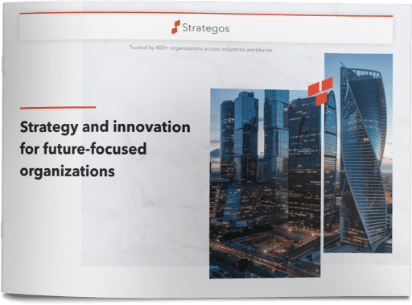We are all Innovators
Who’s doing the innovating in your company? A central innovation group? R&D? marketing? Or, is everyone expected to be an innovator ? For many companies, the Holy Grail is to have the entire company innovating; and especially the front line employees. The front line employees, those closest to the work and the customers, usually have the best insights to improve performance, reduce cost, or develop new products and services. Deep and broad engagement unlocks hidden potential, and the payoff from front line innovation is better alignment, faster action, and improved results.
We have tested several online innovation platforms recently, and with mixed results. The software platform is not a magic bullet; it will help to organize and sort ideas and can also build greater virtual connections between dispersed innovators. But the software platform cannot substitute for other key parts of an innovation program. Defining the Challenge (the innovation issue to be addressed), providing effective stimulus for innovation (the new perspectives and insights) and coaching employees to give them confidence about how to draft an idea are things that the software platform alone is unlikely to manage.
Here are 5 guidelines that will help to make your front line innovation program (software based or not) more successful.
1. Spark the innovation with new perspectives and insights.
Innovation seldom happens in a vacuum. Innovations start with new perspectives. Provide your front line innovators with a small set of new insights about customers or markets – or ask them to develop their own insights (see #2.) Make the insights emotionally compelling and have them resonate with employees. Ask the innovators to think about the implications of these insights to the current business challenge and to suggest innovative ways to address the insights.
2. Give people the tools and skills they need to participate.
Innovation can be taught. Leaders must act intentionally and proactively to build new skills throughout their teams of employees.
Your employees need to learn to develop their own new perspectives about your customers, market, and company. This requires skills to identify and challenge industry orthodoxies, extract unmet and unarticulated customer needs, envision industry and market changes, and understand the company’s core competences. Employees must also learn how to do structured idea generation, turn ideas into business concepts, and define low-cost learning experiments. Whirlpool has already trained upwards of 30,000 of its people in the skills and tools of innovation.
3. Focus innovation on issues of importance.
Front line employees are not likely to be motivated by financial targets (e.g., grow revenue by 20%). But they will be motivated by ambitious strategic goals that inspire the employee as a person as well as a contributor to the company. CEMEX, a global building materials company based in Mexico, declares innovation platforms such as “housing for the poor” each year as aiming points for ideas. GE issues broad business challenges like “How can we improve the world’s water supply?” The idea is to focus on important business challenges, keep them fresh, and provide helpful boundaries.
And it should go without saying, but you might need to explicitly focus the innovation on external customers and markets. We have seen a surprising number of ideas focused on internal issues like improved employee training or healthier food in the cafeteria.
4. Keep the enthusiasm flowing.
Nothing is more de-motivating to would-be innovators than a mysterious “black box” process. Keep the process simple, clear, and transparent. Let innovators know who has the decision rights for moving ideas forward and clearly provide the decision criteria that are being used. Strive to keep the politics out of the process. Once the flow of ideas begins to wane, start a new campaign. And don’t discount the benefits of public recognition for innovators. In our experience, innovators are more motivated by public recognition than by financial rewards.
5. Use all levers at your disposal.
Front-line innovation is a systemic challenge that requires a systemic solution. If you want your employees to act more innovatively, you’ll also have to work hard at creating the right combination of leadership, culture, organization structure, incentive system, and key process changes that embolden experimentation and motivate people to achieve new results.
Unlocking the hidden potential
So who are the innovators in your company? The answer could be anyone – anyone at any level and in any position. Companies that are truly serious about embedding innovation know that fresh insights and ideas arise throughout their workforce when they are willing to create the structure and rewards to allow those ideas to succeed. Their reward? Deep and broad engagement across the organization and the next leap forward in competitiveness.





